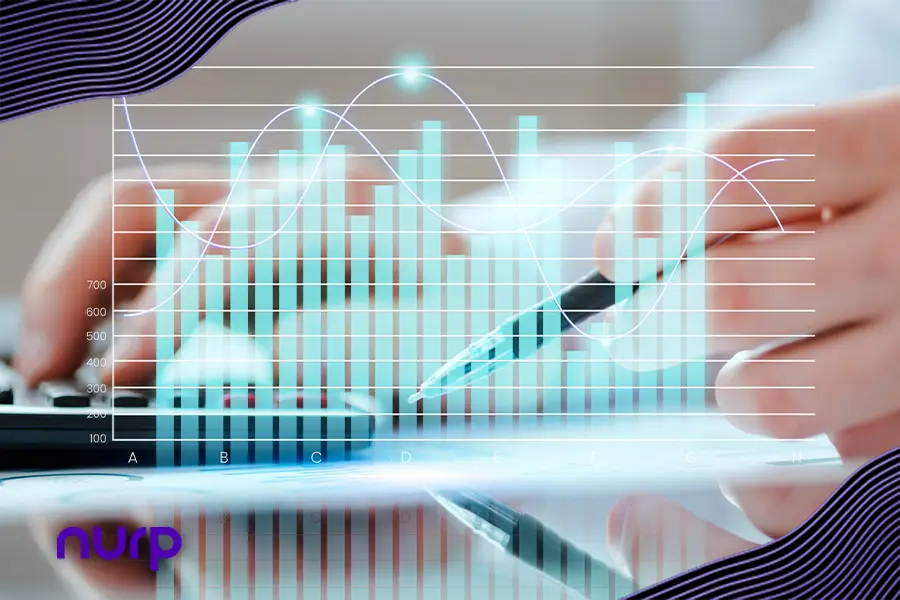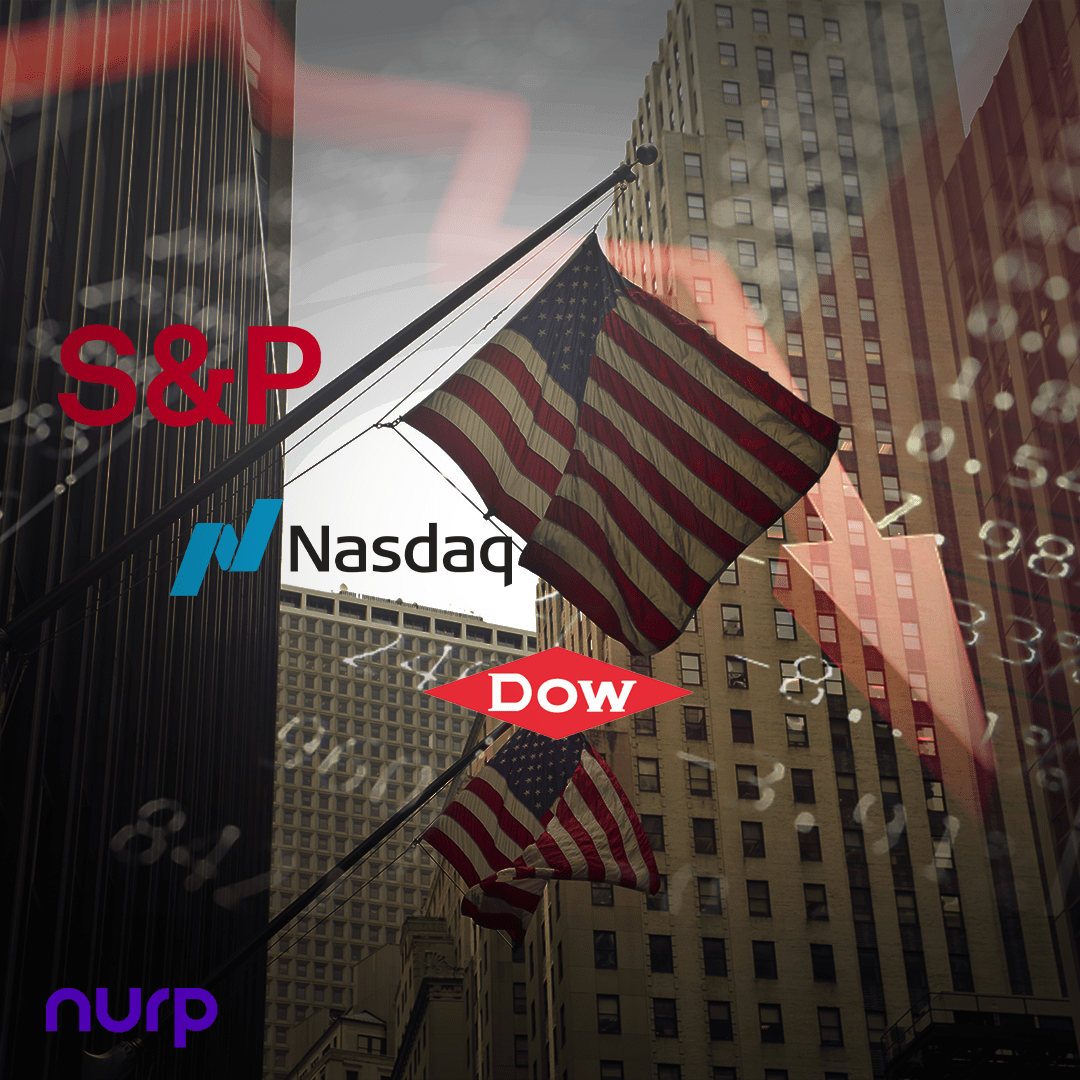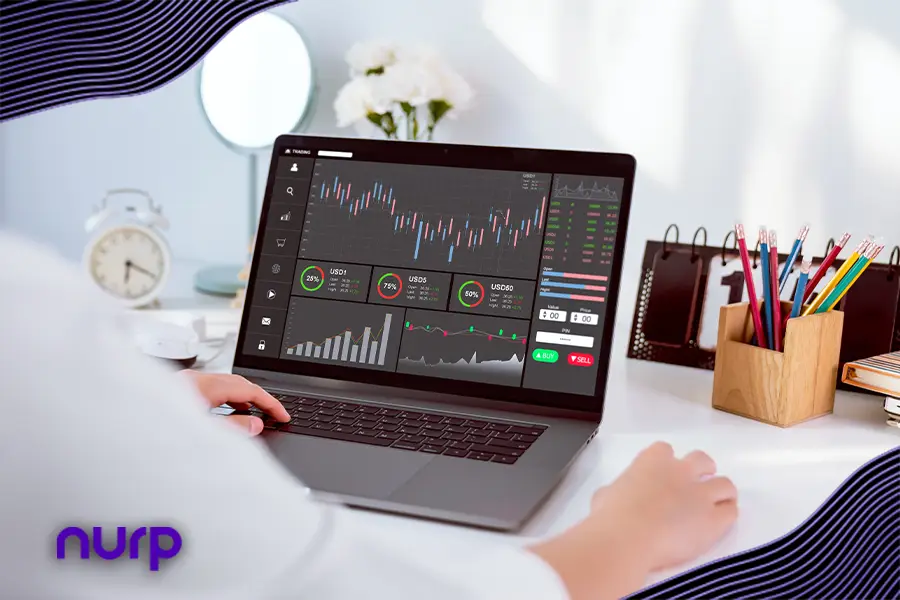The financial markets have always been fast-paced, unpredictable – and definitely unforgiving. Trading, in particular, demands speed, precision, and most importantly, a deep understanding of the data driving market movements. While some on Wall Street and in big institutions are able to spend all day analyzing charts and learning the tricks and trades, most retail investors simply don’t have the time, experience or expertise to keep up.
Algorithmic trading has been one of many answers to these inequities, providing a tool to help with making trading decisions and executing strategies far faster and more accurately than any human could. But as technology continues to evolve, the future of trading is being shaped by a new and transformative force: machine learning.
Although the trading algorithms we use today don’t yet harness the full potential of AI or machine learning, it seems like we’re all standing on the precipice of a new era. As research in AI advances, companies like ours are perusing the boundaries of what’s possible with trading algorithms, exploring how machine learning could someday revolutionize the industry – and possibly even our bottom lines.
Let’s take a deep dive into what machine learning for algorithmic trading could mean for the future, what we’ve achieved so far, and how you can be part of this evolution by leveraging today’s cutting-edge trading algorithms while staying ahead of the curve with tomorrow’s innovations.
But before we do that, it must be noted that investing is an inherently high risk activity, and there is no tool, technology, or strategy that can ever eliminate risk. The potential for loss of capital – even significant or total financial loss — can never be eliminated. As a general rule, investors and traders should never invest more than they can comfortably afford to lose.
What Is Algorithmic Trading?
Before we look at what machine learning for algorithmic trading could someday do, let’s establish a clear understanding of what algorithmic trading is today.
Algorithmic trading software uses predefined rules and instructions – i.e., algorithms – to execute trades within various financial markets, from forex to crypto and beyond. These trading algorithms can analyze historical data, spot trends, and execute trades within milliseconds, capitalizing on price inefficiencies or market opportunities that are invisible to human traders. Trading algorithms do not – and cannot – eliminate risk, nor can they promise profitable returns, but they can be an effective tool in a trader’s arsenal to stay on top of their trading game.
Traditional trading algorithm software relies on a fixed set of rules derived from technical analysis, price action, and other market indicators. These trading algorithms are typically “backtested” on historical data to ensure they work under certain conditions, and when conditions are met in live markets, the algorithms execute trades without emotion or hesitation.
Nurp has been on the cutting edge of algorithmic trading since the company’s inception, designing advanced algorithms specifically for the forex and gold markets, and exploring other financial markets as well. We’ve taken time-tested strategies and encoded them into powerful trading systems that work 24 hours a day, seeking to give our users a competitive edge. And while no trading algorithm is foolproof, can eliminate risk, or can promise profitable returns month over month – including ours – we believe that our trading algorithm software can be a powerful integration into an existing investment strategy.
Read More: Trading Algo Live During Volatile Market
What Machine Learning For Algorithmic Trading Could Bring To The Table
The next frontier for algorithmic trading might very well be machine learning – a subset of artificial intelligence that allows systems to learn and improve from experience. While algorithmic trading software as it stands is already incredibly powerful in terms of its potential, it still follows, and is constrained by, static rules. Machine learning, for algorithmic trading, on the other hand, could allow trading algorithms to dynamically adapt, learn from new data, and even evolve based on ever-changing market conditions.
Imagine a trading algorithm that doesn’t just follow preset instructions but can recognize novel patterns, adjust its algorithmic trading strategy in real time, and even predict future market movements with greater accuracy. This is the potential of machine learning for algorithmic trading, and it’s up to companies in the industry to drive this potential forward until it manifests as a tangible market offering.
Here’s how machine learning for trading algorithms could potentially enhance the world of trading and investing in the future:
Pattern Recognition and Predictive Power: Machine learning trading algorithms would potentially excel at identifying patterns in vast amounts of data – something that traditional trading algorithms can only do to a limited and static extent. By recognizing complex patterns in price movements, volume changes, and other factors, machine learning could potentially predict market trends before they fully materialize.
Adaptive Strategies: Unlike traditional trading algorithms, which operate based on pre-set conditions, machine learning models could continuously refine their strategies by learning from their performance. If a particular market condition changes or a strategy underperforms, a machine learning algorithm could adjust itself, improving its chances of success without human intervention. If you stop and think about it, this concept is mind blowing, especially considering how it could be used in finance.
Real-Time Data Processing: Financial markets produce a tremendous amount of data every second. Machine learning models can process and analyze this real-time data faster and more efficiently than current algorithms, leading to more timely trading decisions.
Sentiment Analysis: Machine learning can tap into non-traditional data sources such as news articles, social media, and even forums to gauge market sentiment. This would allow algorithms to factor in qualitative insights, such as geopolitical events or market rumors, and adjust trading strategies accordingly.
Why Aren’t We Using Machine Learning in Algorithmic Trading Yet?
As exciting as machine learning for algorithmic trading sounds, the reality is that it’s not yet widespread in the industry. The technology simply isn’t there yet – but it’s likely being developed in the background. There are several reasons for this, but two of the most critical ones are data complexity and regulatory hurdles.
Complexity of Financial Data: Financial markets are very complex, very chaotic, and are influenced by so many different variables, so many of which are simply impossible to predict. And, while machine learning models can learn from historical data, markets seldom behave in predictable ways. The challenge lies in training machine learning models that can adapt to the chaotic nature of real-world trading and avoid overfitting – where a model performs well on historical data but fails in live markets.
Regulation and Risk Management: Regulatory requirements in the financial industry are stringent, and for good reason. Plus, while certain international norms exist, laws and regulations may change from country to country – jurisdiction to jurisdiction, and introducing machine learning for algorithmic trading brings its own set of risks. Machine learning models can sometimes be “black boxes,” meaning even their creators might not fully understand why they make certain decisions. Regulators demand transparency, which makes it difficult to implement machine learning models that operate in ways that aren’t easily explainable.
Despite these challenges, we believe that machine learning for algorithmic trading isn’t a question of if but when.
Nurp’s Vision for the Future of Algorithmic Trading
At Nurp, we’ve been successfully selling trading algorithm softwares since our inception. And while our current line of trading algorithm softwares don’t use machine learning, our product team is actively exploring ways we could potentially one day incorporate AI and machine learning into future product offerings.
Our product team is always pushing boundaries, and we’re excited about the possibilities. We’re investigating how machine learning can be applied to trading in a safe and regulated way, testing new strategies, and constantly looking for ways to improve and stay ahead of the technological curve. The goal isn’t just to follow market trends but to create them. We see a future where our trading algorithms will learn, adapt, and thrive in even the most challenging market environments, and our clients will be the first to benefit.
Today’s Trading Algorithm DNA
While the future of trading algorithms with machine learning is promising, there’s no need to wait to gain an edge in the markets. The technology we’re developing today is already incredibly powerful and has helped many see their trading goals come to fruition.
Currently, some trading algorithms on the market can help users potentially:
Capitalize on Proven Strategies: We believe our trading algorithm softwares are built on sound principles that have stood the test of time. While that doesn’t preclude a bad month or financial loss due to heightened market extremes, investing and trading in general should be seen through the lens of the long-game. With them, you can take advantage of high-speed, data-driven trading that maximizes opportunities in both forex and gold markets.
Stay Ahead of the Curve: As we continue to investigate machine learning for algorithmic trading capabilities, retail investors could be in the perfect position to upgrade their trading strategies when the time is right. Being part of the Nurp ecosystem ensures that there will be access to some of the latest and most advanced trading technology.
Reduce Emotional Decision-Making: Our trading algorithm softwares execute trades based on data and programming, not emotion, which can help to mitigate the pitfalls of human emotion-based errors, ensuring trades are made with precision and speed, not emotions like fear and greed
Access a Team of Experts: Our product team isn’t just working on machine learning – they’re constantly refining our current trading algorithms. When you invest in our products, you’re investing in a team that is dedicated to your success.
Read More: Why Your Trading Software Might Be Holding You Back (And How to Fix It)
How to Get Started
The journey toward machine learning-enhanced trading algorithms is well underway, and we’re excited about what’s to come. But the future doesn’t have to wait. By choosing our trading algorithms today, you’re making an investment not only in cutting-edge technology but in a company committed to innovation, transparency, and success.
Getting started is simple. Contact us for a consultation, and we’ll guide you through how our current algorithms can potentially fit into your trading strategy and overall financial goals – it doesn’t matter whether you’re new to algorithmic trading or a seasoned pro.
Real-World Applications of Machine Learning in Financial Markets
Although machine learning for trading algorithms isn’t yet fully integrated, we’re already seeing the transformative power of AI in other areas of finance – and this is something that is exciting a lot of people and big institutions. For example, hedge funds and investment firms are exploring machine learning models to predict credit risks, optimize portfolios, and even detect fraudulent activity.
One particularly fascinating application is quantitative hedge funds looking into leveraging machine learning to detect market anomalies and uncover new trading signals. These funds analyze enormous datasets, including economic indicators, market sentiment, and global news, to generate trading strategies that adapt to new information in real time. The same principles that are driving success in these hedge funds could one day be the foundation of a machine learning-based algorithmic trading system, offering both retail and institutional investors unparalleled precision.
At Nurp, we’re looking at these real-world applications as case studies to inform how we might bring AI-driven enhancements to our algorithms in the future. Right now we’re in the exploration phase, and can’t promise a full integration of AI into your product line, but we do think the future looks bright. Only time will tell.
What Traders Should Know Before the AI Revolution Goes Full Swing
As exciting as the future of AI in trading and machine learning for trading algorithms may be, it’s important to have realistic expectations. Machine learning isn’t a magic bullet, and traders need to be aware of the potential limitations before diving headfirst into this new frontier. Remember, as already stated, nothing can eliminate risk, and nothing can promise profitable returns. Investing is inherently high risk, and even the most powerful AI driven tools wouldn’t be immune from downturns or losses.
Data Quality Is King: Machine learning thrives on high-quality, clean data. Unfortunately, financial data can often be noisy, incomplete, or subject to sudden, unpredictable shocks (like geopolitical events for example). For machine learning for trading algorithms to work in real-world trading scenarios, we would need to ensure that the trading algorithms have access to reliable, clean and timely data streams.
Overfitting Dangers: One of the primary risks when training machine learning models is overfitting – when a model performs brilliantly on historical data but fails to generalize to live market conditions. The key challenge for developers is creating models that are flexible enough to adapt without relying too heavily on specific historical patterns that may not repeat.
Regulation and Compliance: As mentioned earlier, financial markets are highly regulated, and introducing machine learning into trading introduces unique and new challenges related to compliance. As always, traders will need to remain aware of how regulators view the use of “black-box” algorithms that can’t easily explain their decision-making processes.
Being prepared for these challenges will separate the winners from the losers in the coming AI-driven trading revolution.
The Ethical Implications of AI in Trading
As with any new technology, there are ethical considerations to take into account. Machine learning and AI offer immense power, and with great power comes great responsibility. One of the primary concerns in AI-driven trading is whether or not these systems could unintentionally amplify market volatility or exacerbate wealth inequality.
For instance, flash crashes – where markets suddenly plummet due to automated trades – could become more frequent if machine learning algorithms overreact to market conditions or misinterpret data signals. While most AI proponents argue that machine learning systems will become more resilient over time, these risks are real, and they highlight the need for thoughtful development and regulation. The truth is, no one knows for sure, since we’re still at the precipice, the beginning, the preamble to the AI revolution.
How You Can Prepare for the AI-Driven Future of Trading
While machine learning for trading algorithms may not be available just yet, savvy traders should start preparing now to take advantage of these future possible developments. Here are a few steps AI enthusiasts can take today to position themselves for success in an AI-enhanced trading world:
Stay Educated: The more you understand about machine learning and its awesome potential, the better prepared you’ll be to leverage these tools when they become available. Start familiarizing yourself with basic AI concepts, and stay informed about the latest developments in fintech and trading technology.
Start with Proven Technology: While machine learning for trading algorithms is still in the early research and development phase, today’s algorithmic trading softwares are already powerful tools that can potentially enhance trading success. By getting started with this technology, traders can develop a solid foundation of experience in algorithmic trading, putting them in position to integrate AI-based solutions when they, and the technology, are ready.
Partner with an Innovative Company: Not all trading algorithms are created equal, and that truth will only be more evident when machine learning hits the mainstream. Any software is only as good as the people who build it. Working with a company that has a forward-thinking product team or R&D team – like ours – ensures that you’ll have access to the most advanced tools as soon as they hit the market. We’re always looking ahead, and when machine learning-based trading solutions are ready for prime time, you’ll be among the first to benefit.
The AI Revolution Is on the Horizon
Machine learning is more than just the latest buzzword – it’s a game-changer that will redefine how trading in the future is conducted. And while the technology isn’t fully here yet, we’re on the cusp of an exciting revolution. By understanding the potential of machine learning for algorithmic trading and getting ahead of the curve with today’s trading technologies, you’ll be perfectly positioned to reap the rewards when AI becomes an integral part of the financial markets.
At Nurp, we’re committed to pushing the boundaries of what’s possible in trading. Whether it’s algorithmic trading software or whether it’s seeing what’s possible in the world of machine learning for trading algorithms, we have the tools, expertise, and vision to help everyday traders succeed.
Join us today and take your first step into the future of trading!
The post Machine Learning for Algorithmic Trading: The FUTURE of Trading Algorithms and AI? first appeared on Nurp.com.








